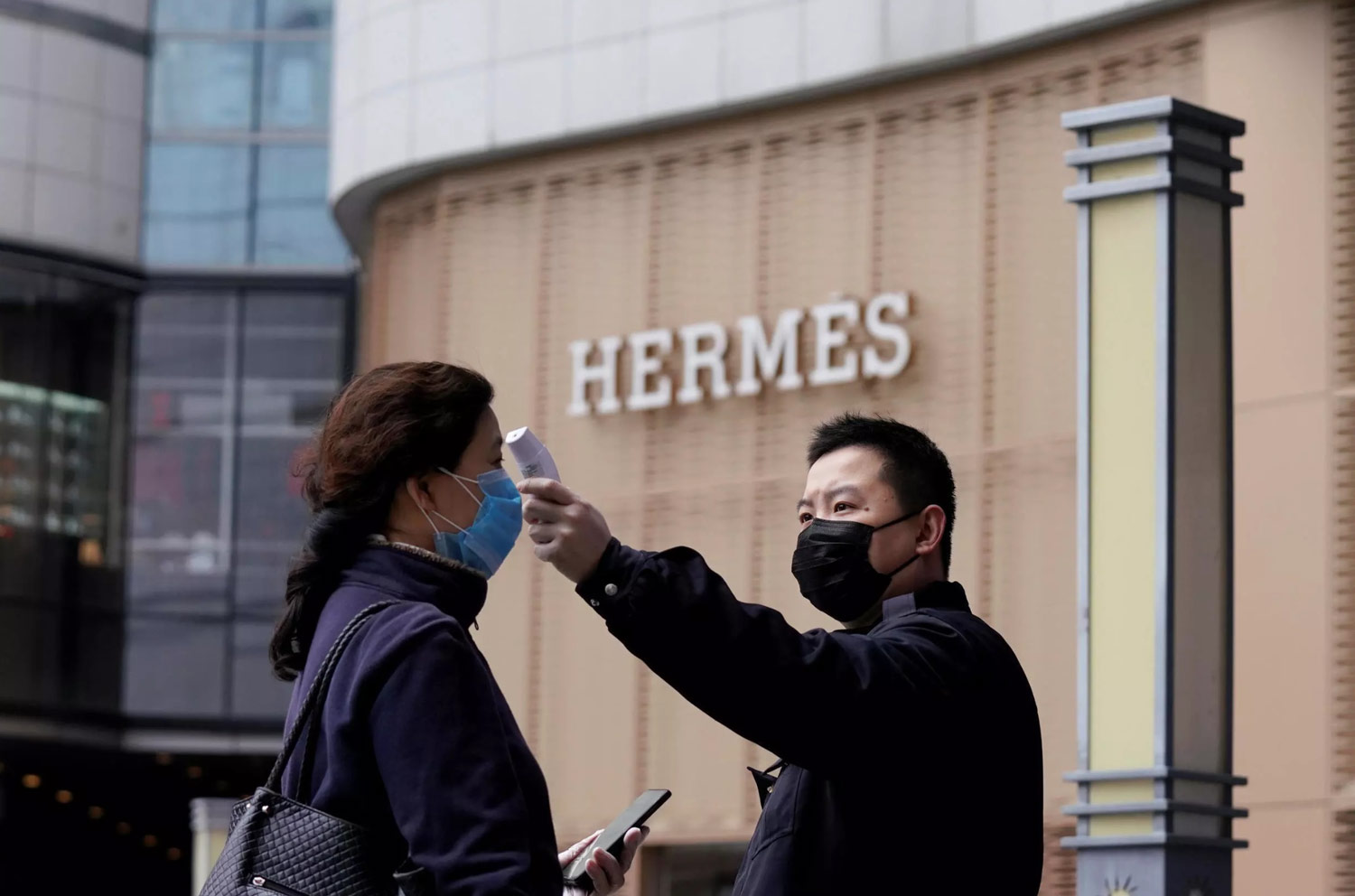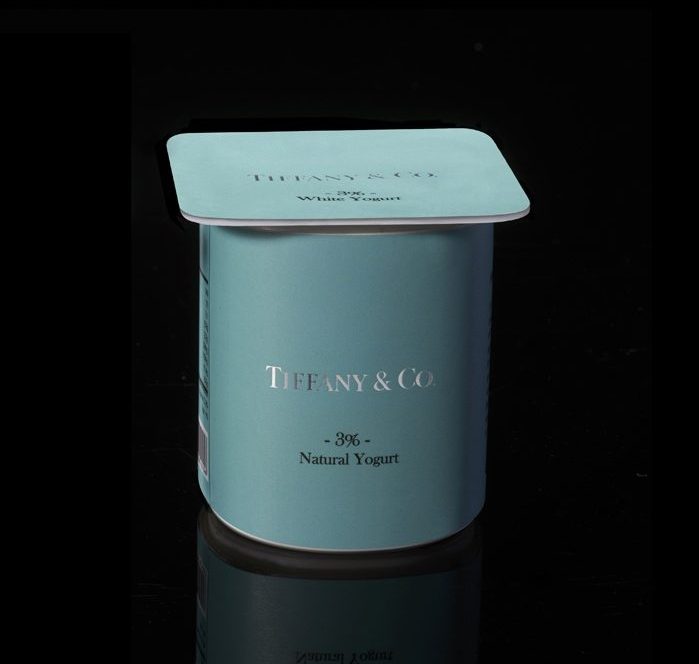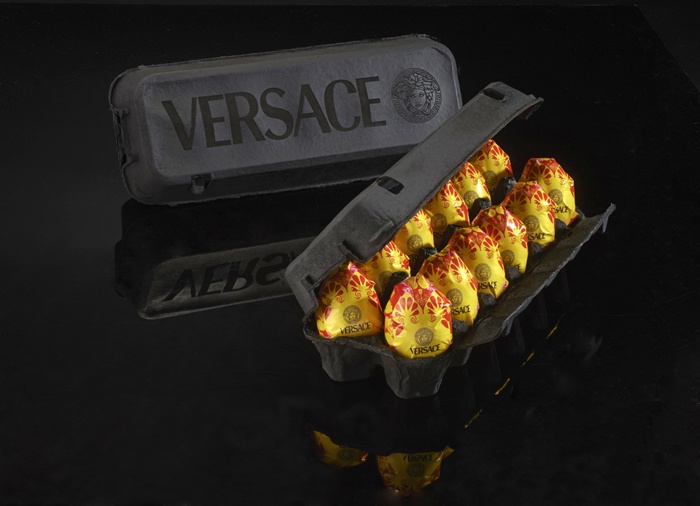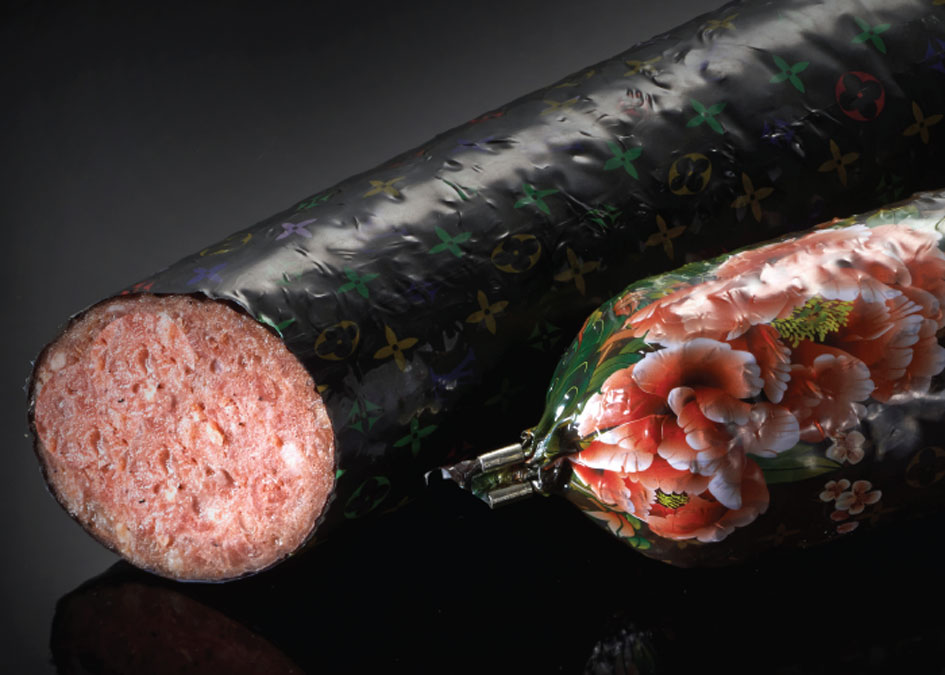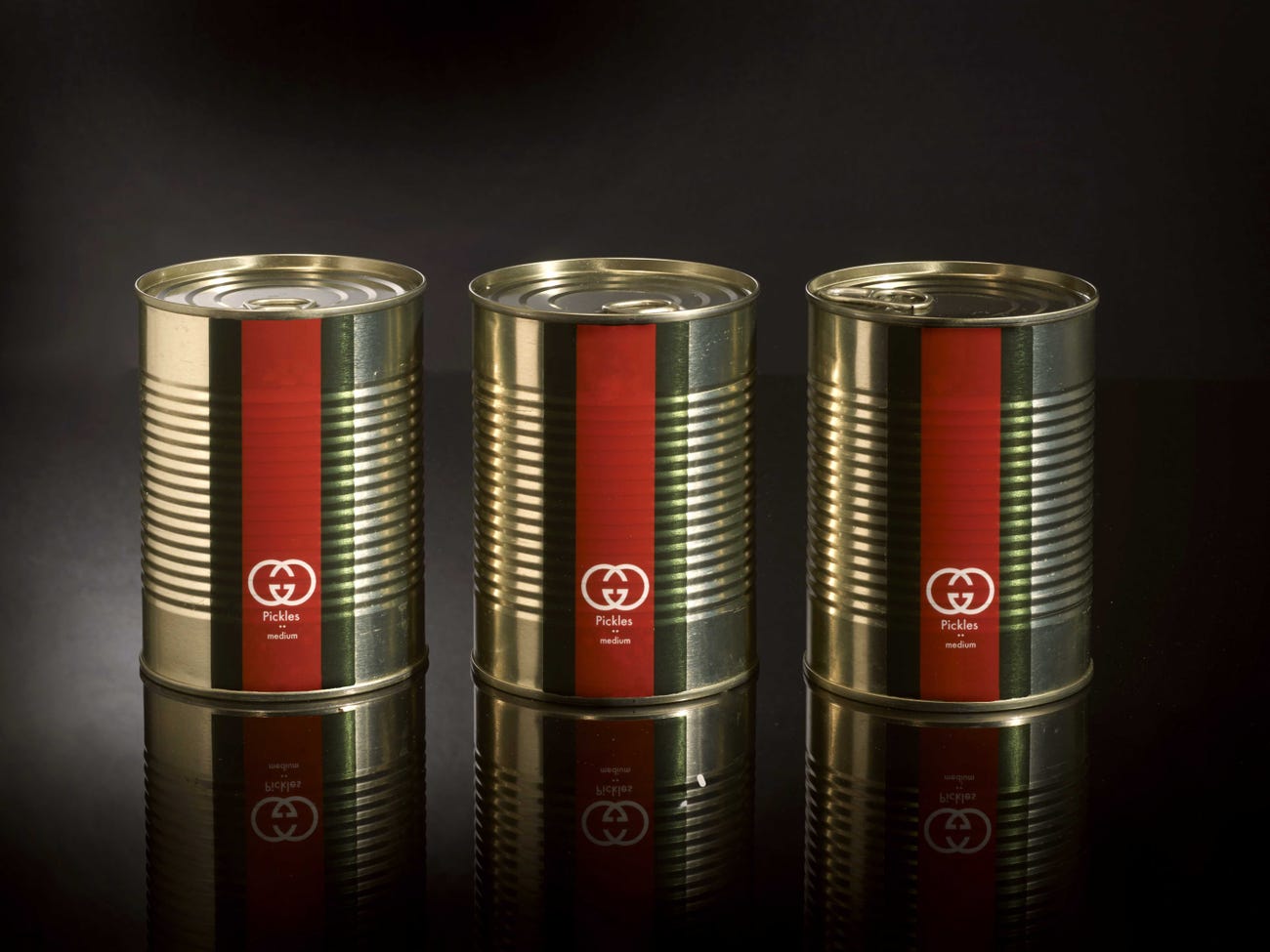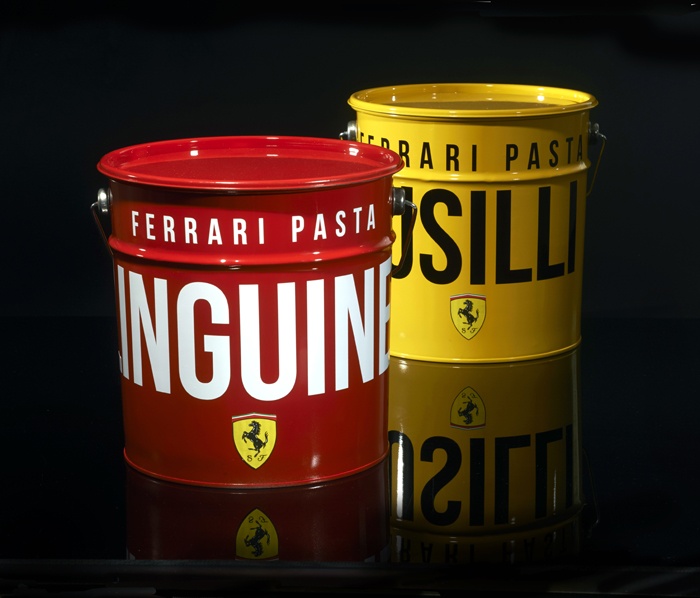Evoking luxury industry names like Chanel, Hermes, and Ferrari have immediate associations: any person can associate these words with quality, luxury, and craftsmanship. But if these powerhouse brands suddenly started producing and marketing household pantry staples––like yogurt, olives, and pasta––would the same connotations still arise? Does the sheer force of branding still exert its power here?
Image 1) Tiffany & Co. yogurt cup, in the signature Tiffany blue. Image 2) A carton of individually-wrapped Versace eggs. Image 3) Mergui’s Ferrari-brand pasta in linguini and fusilli. Image 4) Louis Vuitton salami in the brand’s signature LV print. Image 5) Cans of Gucci-brand pickles.
One contemporary Israeli artist and designer, Peddy Mergui, wants to point out that the power of brand associations, packaging, and design, over actual product quality, have much more influence over our consumption than we think. In an exhibition at the Holon Museum, Mergui created basic everyday products presented in luxury brand packaging: iMilk by Apple, eggs by Versace, flour by Prada, salami by Louis Vuitton (perhaps wrapped in real leather?) and many more offbeat pantry staples.
As an expert in advertising and owner of the branding agency “Talking Brands,” Mergui is reaching into his toolbelt to elicit the viewer response. Understanding the symbolic value of these brands helps the artist contort their promises of wealth, success, and beauty. He disrupts the desires of the consumer and the all-pervasive “luxury aura” of the brand, juxtaposing them with the low material value of the product, and creating something of an ethical statement. Subconsciously, there is something about Gucci pickles that make them seem special and more desirable: and that is the ludicrous nature of branding and the brilliance of Mergui’s conceptual art.
The exhibition is titled Wheat Is Wheat Is Wheat, and as Mergui explains, it “explores the dynamic and often blurred ethical boundaries of design within consumer culture.” The repetitive title is a take on the famous Gertrude Stein phrase, “A rose is a rose is a rose.” The line appears in Stein’s poem, Sacred Emily, written in 1919:
“Rose is a rose is a rose Loveliness extreme. Extra gaiters, Loveliness extreme. Sweetest ice-cream. Pages ages pages ages pages ages.”
This line also takes a beat from Shakespeare’s famous Romeo-and-Juliet stanza, “A rose by any other name would smell as sweet”; a musing, a lament of straightforward, objective beauty. These are all amorous declarations, and so Wheat Is Wheat Is Wheat recognizes our infatuation with consumption and possession of luxury. Yet, Mergui’s exhibition title also emphasizes the ultimate simplicity of the commodities he’s created: Bulgari butter is still just butter, nothing more than what it appears. The symbolic value of the designer object through its branding far exceeds its material value: does the same case still stand with designer tee-shirts, watches, and handbags? Mergui’s artworks expose the irony of such ostentatious purchases and forces viewers to confront their participation in a culture of conspicuous consumption, where labels and brand names signify status, justifying ballooned prices for increasingly absurd objects: prices that are far from indicating craftsmanship or quality.
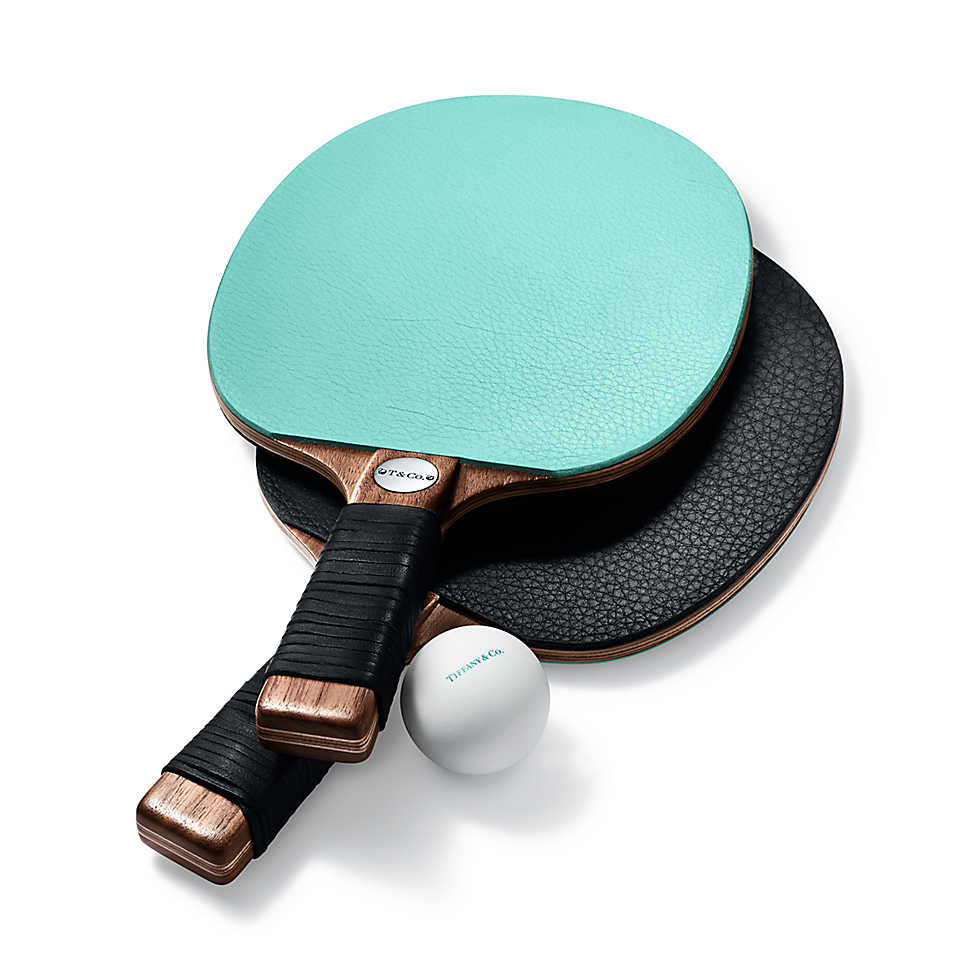
Tiffany & Co. table tennis paddles in the signature Tiffany blue. A great way to show off affluence, the paddles which can be found on the Tiffany website here.
The objects presented in this exhibition may be absurd, but not far from real life. Gucci once manufactured ice cube trays, now selling on TheRealReal for $65. Armani markets its own monogrammed shortbread biscuits, while Tiffany & Co. continues to produce their own $700 leather and walnut table tennis paddles. Mergui’s Wheat Is Wheat Is Wheat flips designer labels on their heads and points out the unbelievable power of a recognizable and respected name through a singular inquiry: when we purchase a luxury item, how much are we paying for the packaging versus the product’s believed ability to satisfy our needs? Without a doubt, we look at Mergui’s Nike fruit as though there must be something extraordinary about them, and there are some who would certainly pay the premium for them if they were to hit grocery store shelves.
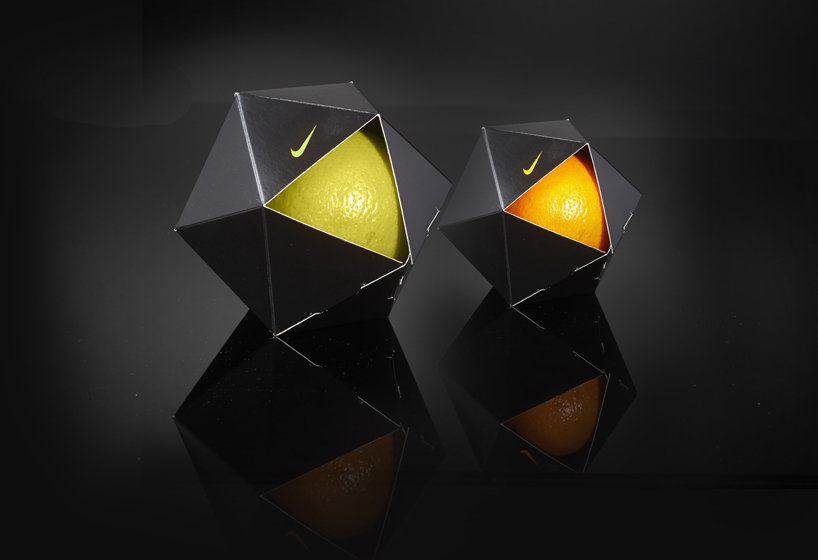
Mergui’s Nike-branded citrus fruits.
Today, fashion and art have grown to have many parallels, including this cultural conniption in discussion. Some of the most iconic Pop artists of all time have toyed with this similar concept that pervades fashion. Andy Warhol’s Campbell’s tomato soup cans or Jeff Koons’ balloon dog sculptures all allude to the blurred lines of creativity and product, taking simple objects and framing them as something of much greater value: in this case, priceless art objects. Warhol’s famous Soup Cans, Coca-Cola Bottles, and later portraits of Marilyn Monroe demonstrated his obsession with the cycles of money, product, and celebrity. However, not merely self-reflective, the brilliance of Warhol’s aesthetic philosophy––dare we say his brand––was in its ability to also point to America’s obsession with fame, possession, and consumer culture. And based on the sheer sales of such art pieces, this concept has immense power over the consumer.
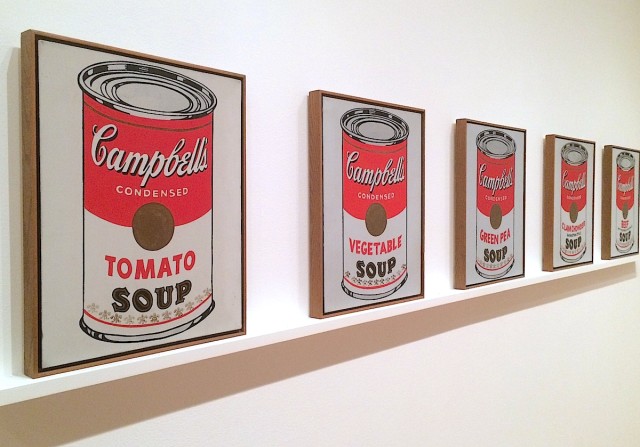
Andy Warhol’s Campbell’s Soup Cans was produced between November 1961 and March-April 1962, but has since been extremely mass-produced and printed. Warhol ate Campbell’s soup nearly every day and purportedly chose it as a subject for its sense of familiarity to him. Warhol’s reliance on themes from popular culture helped to usher in pop art as a major art movement in the United States.
So too does Damien Hirst’s name hold a similar gravity today, now as the highest-value artist alive. His trademark as a contemporary artist is his animal-in-formaldehyde medium: perhaps his most infamous work, “The Physical Impossibility of Death in the Mind of Someone Living,” consisted of a tiger shark he purchased for about 6,000 British pounds (about $7,400 USD) preserved in a vitrine of formaldehyde. The piece sold for close to $12 million.
“For a nouveau riche person it’s like, ‘I have to have my Damien Hirst,” says contemporary art advisor Lisa Schiff on Hirst’s sudden soaring in value. When Damien Hirst began being represented by Gagosian, the largest contemporary art gallery in the world, his name-value doubled. Evidently some people who are “really into Gagosian’s brand” may be willing to spend a lot of money on a work by Hirst, Schiff stated.
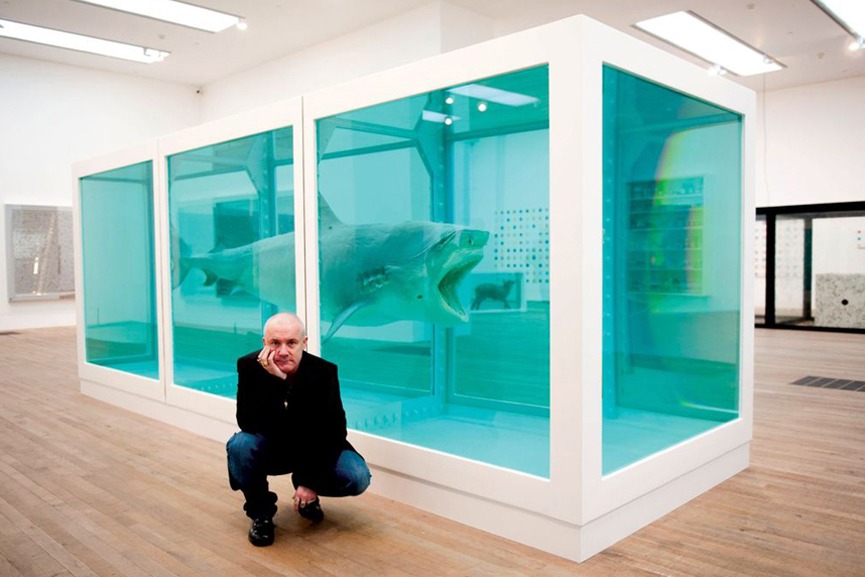
Damien Hirst with his most famous work, The Physical Impossibility of Death in the Mind of Someone Living, 1991. Hirst is reportedly the United Kingdom’s richest living artist, an indeed one of the wealthiest contemporary artists today.
Indeed in today’s market, many major art collectors and art-purchasing corporations care more about the work of a famous contemporary artist and the weight that their name holds, rather than the quality or craftsmanship of the artwork itself. And what greater example is there than the outrageous banana taped to the wall! Maurizio Cattelan’s installation at 2019 Art Basel Miami, “Comedian,” created such huge buzz and fanaticism that it became a highly desirable object: the duct-taped fruit eventually sold for a whopping $120,000.
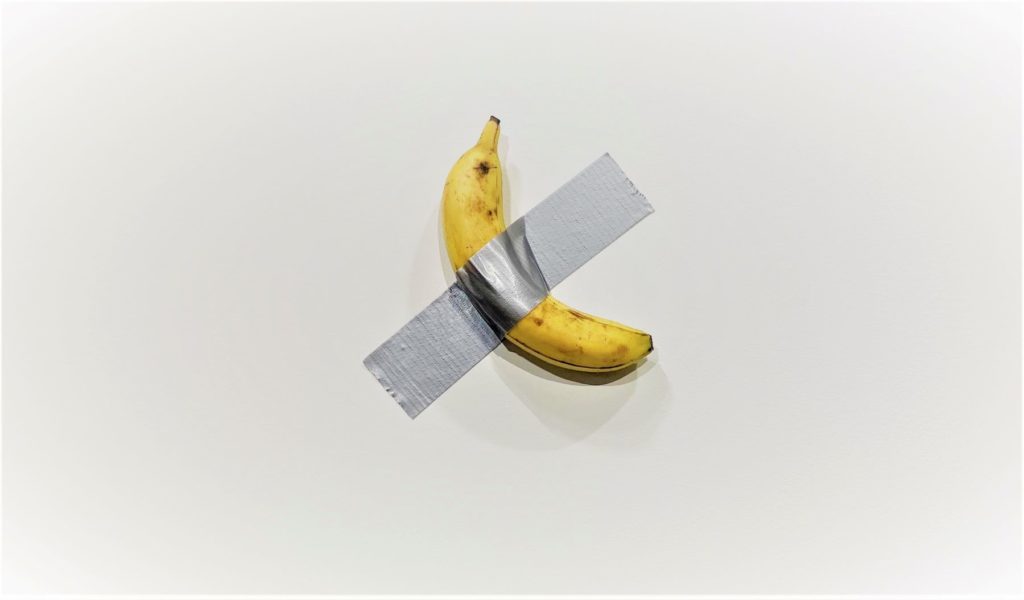
Comedian (2019) by Italian artist Maurizio Cattelan; a work, created in an edition of three, consisting of a fresh banana taped to a wall with a piece of duct tape. It generated so much media attention and throngs of viewers at the Basel that due to safety concerns, Galerie Perrotin, the representing gallery, had to prematurely take it down from viewing.
The powers that the right branding and marketing have on justifying astronomical price tags in the luxury industry is perhaps stunning, but conceptually explainable. Income growth in recent decades has been so heavily concentrated at the very top that luxury markets have become the biggest drivers of economic activity around the world. The motives of luxury goods consumers, and indeed why they might actually consider Gucci ice cubes, are tied up with economist Thorstein Veblen’s theory of “conspicuous consumption.” This is known as the somewhat irrational desire of affluent consumers to purchase products whose cost exceeds their worth, in an attempt to signal their wealth and power to others. And though the most bedrock laws of economic rationality dictate that as the price of a product goes up, consumers are bound to buy less of it, effective branding and reputation creates what are known as “Veblen goods,” –– commodities whose sales actually increase when their price rises.
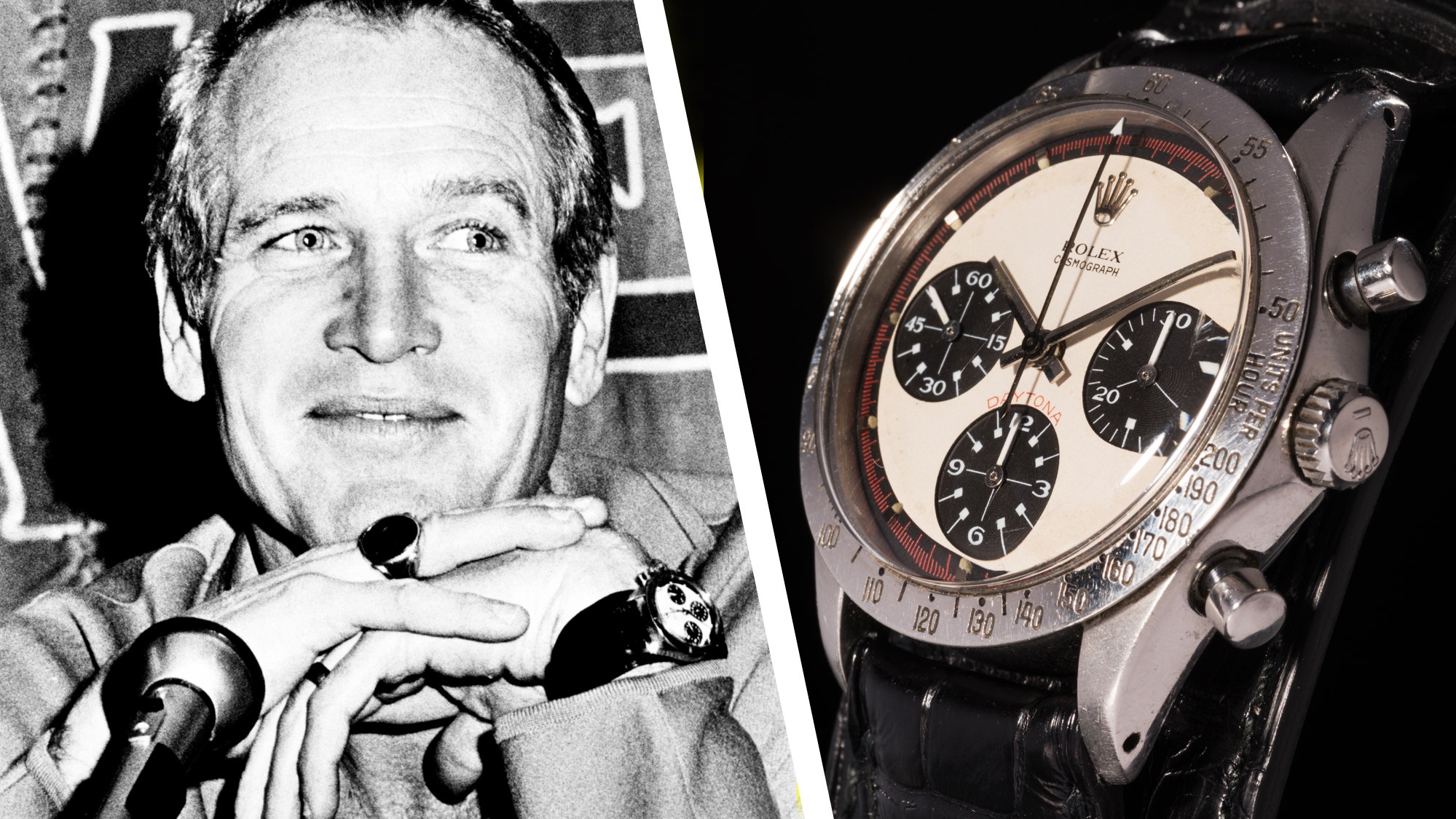
Movie star Paul Newman’s Rolex, an exotic-dial Daytona, recently sold for a record-breaking $17.8 million, setting a new record for the highest price ever achieved for a wristwatch at auction. It was a watch that grew so synonymous with its owner it became known simply as Paul Newman’s Paul Newman. The strength in Newman’s name comes in part from ties to Americana history and Hollywood memorabilia.
The role of branding and brand reputation is the only way that Veblen goods can exist. Take, for instance, the Supreme brand: the most sought-after, high-valued, and fascinating streetwear brands in the world. As much a baffling art experiment and social prank as they are a clothing company, Supreme is able to market its Hanes tee-shirts and sweatshirts for hundreds of dollars, with streetwear hypebeasts camping outside stores for days prior to new collection drops, through their baffling branding of the infamous red box logo: a design lifted from the Pop artist Barbara Kruger, might we add. Through brilliant and admittedly mysterious marketing schemes employing artificial creation of demand through scarcity, artist collaborations, celebrity partnerships, and a consciousness of youth, Supreme is able to sell its BoGo (Box Logo) hoodie for $450-500, and even more on resale markets.
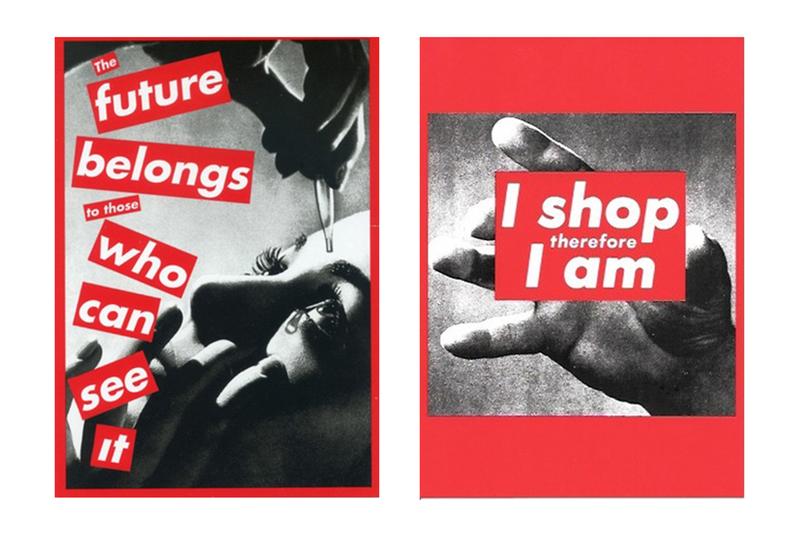
The work of Barbara Kruger, an American conceptual artist and collagist. Pulling from her experience with graphic design and advertising, most of her work consists of black-and-white photographs, overlaid with declarative captions, in bold white-on-red text. Known for her combination of type and image that conveys a direct cultural critique, her works examine stereotypes and the behaviors of consumerism.
As in art and luxury goods alike, Mergui’s pantry items explore the comical ability of effective branding to control our opinions, desires. He asks what the consumer is actually paying for when they dish out a premium for a “brand”? The creation of desire through branding is the only way that such economic paradoxes as Veblen goods like Supreme’s enigmatic and downright hilarious concrete brick can exist and quickly sell out in stores: proving that with enough of a following, a brand can sell anything. Across multiple industries, once an entity has built a reputable name for itself, with strong associations to wealth, luxury, and high quality of life, the power of branding allows them to run free with what they produce, whether art, fashion goods, or pantry supplies.
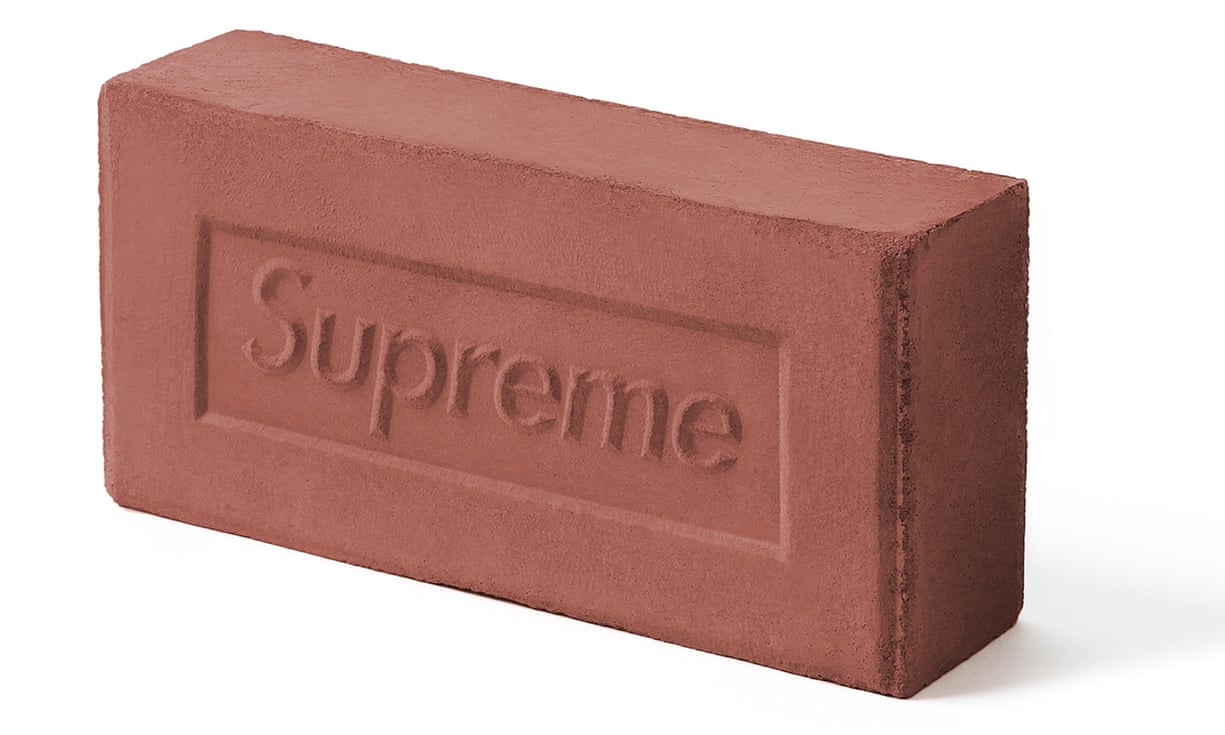
Originally sold for $30 each, the Supreme brick is now fetching nearly $1,000 on eBay and other resale platforms. On Reddit, one user crunched the numbers for how much a house made entirely of Supreme bricks would cost: $4,704,000, in case you were wondering.
In today’s complicated markets, we have the benefits of increased choices: greater variety, quality, and specialization of our products. And at the same time, the tactics employed by branding specialists, name-brands, and advertisers create a unique challenge for the regular consumer. As Mergui seems to advise in Wheat Is Wheat Is Wheat, what we need is to exercise greater critical thinking skills and visual interpretation in the marketplace. Just because this item is produced by a recognizable brand and stands at a higher price point, is it really the best choice? Does its material value match its advertised worth? Today, it’s more important than ever to think critically and make your own informed purchasing decisions, treading through a crowd of people in box logos, willing to pay top dollar for a symbol.
